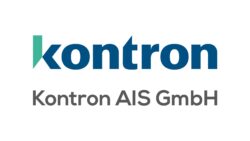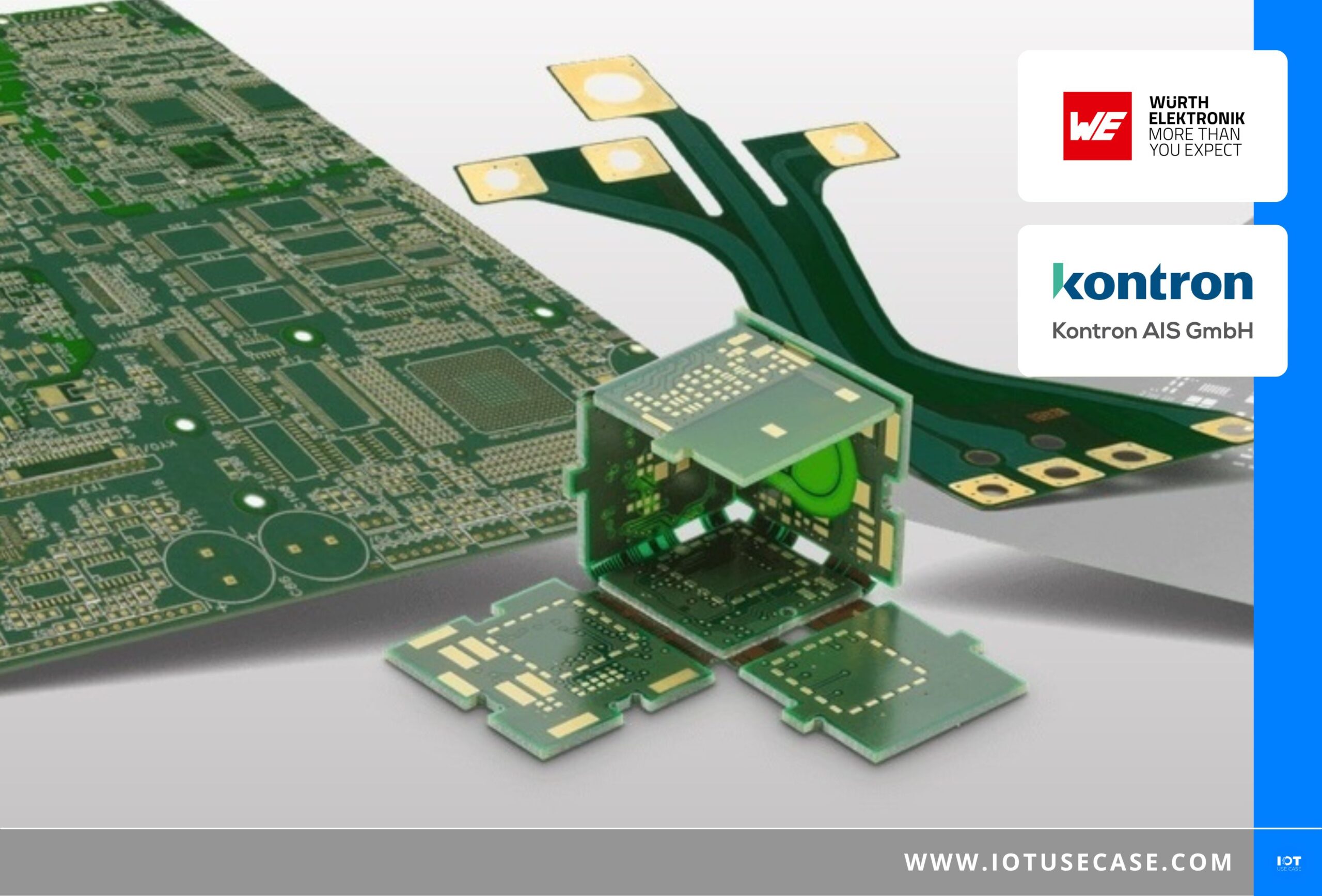Increasing productivity through transparency in manufacturing is one of the central topics for leveraging added value from data. For this, the basic framework of production must be in place – a central node here is the MES (Manufacturing Execution System).
Podcast episode summary
The MES provides the data and distributes it so that production can be optimally planned and continuously optimized. Since the topic “MES” affects many manufacturing companies, episode 82 of the IoT Use Case Podcast is a special episode only on this topic.
The company “Würth Elektronik” talks about their use cases, challenges and vision towards IoT, together with their partner “Kontron AIS”. Klaus Faller (Würth Elektronik), Robin Schubert and Frank Tannhäuser (Kontron AIS) are the guests of Madeleine Mickeleit.
As Europe’s leading PCB manufacturer, Würth Elektronik serves the needs of its customers from the initial design idea to the production of prototypes in the online store and the manufacture of medium and large series. Kontron AIS is Würth’s partner in the field of automation technology. As a systems and software company, Kontron offers solutions in factory and manufacturing automation as well as plant integration and control.
The PCB manufacturer creates its digital twin of the PCB through Kontron AIS’ MES – with connectivity of existing and new equipment plus standardization of equipment integration.
Podcast interview
Increasing productivity through transparency in manufacturing is one of the central topics for leveraging added value from data. For this, the basic framework of production must be in place, and a central node here is the MES (Manufacturing Execution System), which supplies and distributes the data so that production can be optimally planned and continuously optimized. Since the topic “MES” concerns many manufacturing companies and is also requested from me, today comes a special episode only about this topic.
Today, the company “WÜRTH Elektronik” reports about their use cases, challenges and vision towards IoT, together with their partner “Kontron AIS”.
Hello Robin, Frank and Klaus! Robin, where are you right now?
Robin
I can be found in the office today; I’m doing great. We are in the midst of product development and have some great topics in house. An exciting phase!
Frank, where are you and how was the SPS show for you?
Frank
I am also in the company, but in a different room than Robin. The SPS fair was quite good for us – we were there with our hardware and software products. The combination of the two was a good thing.
I was briefly with you at the booth; it’s nice to get together live and in color too! How was your journey? Did you have to travel far?
Frank
We come from Dresden and had a journey of about three hours to Nuremberg; that was fine.
Also from you, Klaus, I would like to know where you are.
Klaus
I’m sitting in my home office in beautiful Schwäbisch Hall today, looking out at the sunny day.
To the intro of Kontron AIS; you are expert for innovative and flexible software solutions, especially in factory and manufacturing automation. You also cover the topic “plant integration and control”.
Frank, what is your team’s job and which customers do you work with?
Frank
Kontron AIS specializes in various software products, and in projects at all levels of manufacturing. Starting in the facility sector, through media supply in factories, then on to the automation of transport systems. And we are also active in individual assembly lines. It continues in factory-wide production controls, to cloud-based and multi-site IIoT solutions.
Actually, we are working on three core topics: Connectivity, transparency and production control. This is all in industries such as automotive, pharmaceuticals, semiconductors, and in recent years, battery and TV manufacturing have also returned.
Robin, you work in product management; what are classic tasks here and what products do you work with?
Robin
For the factory automation sector, we have a product line called “FabEagle”. Among them are several solutions. One is the topic of “interface integration” with a low-code solution called FabEagle®Connect. We have a line control system that specifically controls individual production lines or complex plants. We have the factory-wide function control theme under the FabEagle®MES, which is what we’ll be looking at today in the podcast.
We’ve already covered this topic with one of your mechanical engineering customers; could you summarize that again and generally give a little insight into what use cases and customers you work with?
Robin
I always find the topic of use cases very exciting from our point of view and our workup. The preceding use cases were accompanied by my colleague, Ms. Vanessa Kluge, who was primarily dedicated to the topic of customer service in mechanical engineering. Specifically, this means that the company “RAMPF”, “Fabmatics” and “InnoLas” use our solutions. This is a customer portal for mechanical engineering that provides the topic of machine monitoring, maintenance planning and maintenance execution in a cloud application.
My colleague here highlighted the whole topic together with the customer and explained in more detail the added value of using such customer portals in combination with the machines on machine monitoring. This is an exciting story; here’s a whole podcast and three use cases about it.
Today, we have the topic that we are taking on together with WÜRTH Elektronik: How to view such a production control system in the entire factory, what added value it has brought to production, and how colleagues work with it.
We have another topic for next year: our MES has a long history in PV and battery production. Here we want to dedicate ourselves to the topic of “Green Energy”, i.e.: How does software work in the environment of regenerative energy, respectively in the productions for such technologies? How do you approach the topic, in terms of connectivity, production control and, if necessary, expansion modules that bring the whole topic of cloud and IoT on board?
For me, this is also one of the focus topics for 2023 and beyond, because it is one of the essential topics where IoT can have a real impact – every building block plays an essential role here.
Challenges, potentials and status quo – This is what the use case looks like in practice [06:48]
Frank and Klaus, how did you meet?
Klaus
Kontron AIS has a long history in the field of MES and the story goes back decades: In 2000, I was still working for WÜRTH Solar. At that time, this company set up a solar module production facility in Schwäbisch Hall. That was an industry-ready 4.0 factory from today’s perspective; the term didn’t exist in the past.
In the end, the glass panels went in the front and the solar panels came out the back ready to go. The data were all available digitally and the modules were also tracked. At that time, they were looking for an MES manufacturer, and selected the company AIS. In 2010, I switched to printed circuit boards, which was a bit of a culture shock, since historically everything here still worked with punch cards and slips of paper – very analog.
The change to the printed circuit board, what does it mean? In terms of product?
Klaus
Exactly: WÜRTH Solar was ultimately sold at that time due to the market trend towards Asia. I stayed within WÜRTH Elektronik and switched to PCB production.
In terms of digitalization, it was a culture shock. It also created a relatively big problem, because you can’t do much rearranging during ongoing production – it was like open-heart surgery. We had a great opportunity in 2015, because a manufacturing plant burned down, to move into a location that had much better equipment in terms of digitalization. This is where Kontron AIS came in again and implemented the MES.
Basically, things like this are a worst case scenario. On the other hand, we talk about the Green Field that you were able to build as a result.
Klaus
It should be added that the building burned down only in parts, about 50 percent. Fortunately, the rest continued to run. But a lot of machines were brought in, which we were able to integrate well.
Frank, you probably went right in and already knew the issue internally from you , right?
Frank
My acquaintance with WÜRTH goes back many years; this is also due to historical reasons. I come directly from software development, I wasn’t always in sales, and my point of contact came about at that time because I was involved in the programming of these machines, which was responsible for coating these solar thin-film modules. We looked after the machines here for many years and came back to WÜRTH Elektronik via the MES.
You are in a group of companies within the WÜRTH Group. This is a huge group, so such associations can form sporadically. Here you produce and sell the electronic components, for example, the printed circuit boards, electronic components and things of the same area.
In which area are you responsible within the group? What is your vision for digitalization?
Klaus
WÜRTH is known to most as “screws-WÜRTH”, as a trading company for fastening technology. We now have just over eighty thousand employees, so we are more of a large corporation, but we are subdivided into 400 individual companies, which is why people still often refer to us as a medium-sized company. One of these 400 companies is WÜRTH Elektronik, which is also divided into 3 divisions.
One of them is the production of printed circuit boards. This is also called CBT (=Circuit Board Technology). We have three production sites in Germany for this purpose: one in Niedernhall, one in Rot am See and one in Schopfheim.
Here you are responsible for the optimization of the processes or how can we understand that?
Klaus
Exactly right; I work classically in IT, I’m responsible for process optimization across production and in the course of this I’m always responsible for the major projects. Historically, a lot of software has come together, and here we are redesigning, also on new platforms. A printed circuit board is otherwise always very customized. I always compare this with house building: Here we have the classic terraced houses, but there are also the architectural villas. Accordingly, a printed circuit board can also become complex.
Meanwhile, we also go down to the quantity “1” instead of producing large quantities. The complexity of the printed circuit board is constantly increasing. Customers want more and more data on the product, i.e. production data, which we then collect.
Here we are back at the digitalization vision: You want to make the data usable for your customers and also usable for you internally, for the respective processes.
Can you elaborate on the vision for digitalization, what that means for you guys specifically?
Klaus
We receive the production data from the customer, who tells us in the layout how the PCB should look. Unfortunately, this has happened in an unstandardized way in the past. We have to manufacture a product from it in our line and at the end the customer would like to have the manufacturing data for his hardware. We are now talking about a product twin.
This means that as soon as the customer provides us with the data, we try to capture it in a standardized way, prepare it and use an MES to collect the data in production and hand over the entire package to the customer. They then often already build simulations onto his PCB, for example thermal simulations, so that they can optimize their soldering process, for example, without already having the actual hardware.
Your customer provides you with layout data on how the PCB has to look, and then they want the digital twin to use in your production in turn?
Klaus
You can really think of this layout data as a blueprint for a house. A printed circuit board is not only there to conduct current from point A to point B, that runs on many different ways and we get these layout data from the customer and manufacture the whole thing. Ultimately, if they want to solder their components on it, it’s about simulating thermal processes.
Okay, exciting. If we focus on your manufacturing: Can you give examples of what exactly those processes are?
Klaus
When you see the finished product, a printed circuit board is always very simple – green and it conducts electricity. The bottom line is that simple printed circuit boards go through about thirty production steps. It starts with exposure steps where this PCB image is applied to a single copper foil. Then the copper is etched down, after which the layers are pressed together – then you are in the so-called “multilayer”.
What follows is that one establishes contact from one copper layer to the next layer with many drill holes and fills these drill holes again with copper. Since this production is not always linear, the production steps can also quickly double.
The individual machines are already connected to the MES?
Klaus
Exactly, the most important and complex systems are connected to it, for example the “plating machines” that apply the copper. This was one of the first machines we connected. For the simple processes, we still have a few manual machines.
What are potentials that you have seen here? Was that classic information that you were missing?
Klaus
Our internal benefits were classic. That is, we needed a machine status to capture availability data. A history already helps here. Material tracking was also a big point. Each panel that passes through gets its own ID. To do this, we must also be able to collect the process data and improve the process in general.
The fact that customers receive precisely this process data is actually just a nice side effect.
What types of data are relevant?
Klaus
It starts at the ERP level. This is where the order data comes in. From this, all the production data is prepared. Among other things, recipes that the machines must intercept to match the product. These are channeled directly down through the machine. In addition to availability data and alarm data, process data is again collected and spooled up into a control system.
What was important to you with Kontron AIS to begin with?
Klaus
You need great confidence in an MES manufacturer. Fortunately, this was already expressed in WÜRTH Solar at that time, because this is a complex project. It involves a lot of machine interfaces, a lot of different participants, and that takes a lot of trust and someone who can deliver.
The machine interfaces are very different, there is no “one” standard. Each machine manufacturer provides the data in a different form. Integrating it into our system landscape is a bit of a challenge, depending on which system you have. Here Kontron AIS was a very good fit for the project.
Solutions, offerings and services – A look at the technologies used [18:56]
Frank, you started the project together, what does your solution look like holistically? What is your scope?
Frank
Our product is called “FabEagle®MES”. This has already been in use for a long time and has developed over many decades. It contains the classic function modules that are needed for the processing of production orders of a work plan. Quality data is recorded, track-and-trace information is recorded, and in addition to this data, which is very product-related, we record data that is required for so-called “equipment performance tracking”. These are alarms, conditions and status data; this data is used for appropriate evaluations and reporting.
At WÜRTH Elektronik, we proceeded by selecting a pilot project, i.e. an interesting process step. In this case, it was the solder resist line; where the solder dust resist – the green on the PCB – is applied at the beginning. Here we have integrated the data we found and the MES with this initial to get an added value by increasing transparency. This is usually the prerequisite for a roll out throughout the factory. After this pilot project, we were able to roll this out to many areas; electroplating, mechanical processing, but also photo printing, to name a few examples.
So your first step was to convince management internally to start a pilot project.
Klaus
Very well summarized. We started with a POC, took a small part where there were problems, convinced management of our solution and obtained readiness.
Solder resist is a specific machine that is responsible. How does connectivity on the shop floor work here?
Robin
The topic of data acquisition is relatively complex when you look at such large productions. It’s not plug and play, unfortunately, although there’s a lot of talk about standards in this area. It is our task as a software provider to enter into a dialog with the customer about what the machines are to which we want to connect and where the added value lies.
As a second task, we have the consultation with, for example, the machine suppliers or the review of machine specifications. What data do we get? What data interfaces do these machines have? These are classic questions to ask here. We support the operator of the plant with regard to a wide range of issues. We also accompany the plant manufacturer on the subject of interface integration, right up to the control system.
Klaus, you said that was Green Field. Is this accordingly classic OPC UA?
Klaus
It would be nice if everything was OPC UA; unfortunately, however, we have to conform to the machine manufacturers. Often it is then said that they do not have OPC UA; this is a common problem. A good MES can actually always adjust to anything. Be it an old interface or even a modern one. The mix here is very broad, the MES can go down to the PLC in some cases.
I have heard from others in our network that the percentage of OPC UA-supporting machines is sometimes less than 10 percent – thank goodness you are so flexible here!
So that everyone understands: How does your MES work and what is the added value that makes you special?
Robin
The topic starts with the data interfaces, i.e. machine and equipment integration via various protocols. This is a feature of the software or company you are working with and providing. We provide support for our customers right up to the control system. We also support special interface protocols, such as “SECS/GEM”, which is a semiconductor-specific standard that can also be very complex.
So you’ve tied the machine together with the equipment, and now you first collect the data. These then end up in a large database managed by the MES system – a relational database that makes it possible to link different data together, in terms of the origin of the history and the process affiliation.
The database enables the actual functional modules that such an MES brings: the classic topic of material tracking, what data does the product collect while it is being tested and manufactured? The customer, who then acts as the operator of the entire plant, has access to the function modules via the interfaces, which we call “MES clients”. These make it possible, for example, to create and manage production orders and also to compile reporting.
Also, having the data to give back to your customer will be important to you again, Klaus, right?
Klaus
Absolutely correct; in our company, the MES is used more as a “data distribution and collection machine”. In addition, an MES usually provides many other functions. In the case of the solar modules, we also generated the routings at that time because they were very linear.
At CBT, there was a historical solution for routing, meaning in-house. There the MES is again our circuit board. So there was already a solution in-house to create a routing for a PCB. Since this is very complex, I do not have to map this in the MES, but the MES picks up this routing again.
In a POC, for example, one of the most important questions is always to find out first, why do I actually need the MES?
On material tracking: here it is important to integrate the different data, how is this linked from the order data in the ERP to the process data?
Frank
For tracking in general, we distinguish two types in our MES. One is physical tracking, which works via marked materials and workpiece carriers that have such a mark. Here you can read these markings via suitable readers.
On the other hand, we have the tracking of materials, where we ensure through the processes and allocate the data collected in the process. Furthermore, we support manufacturing where such markings directly on the material are not possible; this is what we call virtual tracking. Here, the whole thing works via the location changes that a machine tells us. So we can still find out when which part was where.
Klaus
The data is passed on to the ERP as we link each manufacturing panel to an order ID to bring the threads together there. Tracking in the PCB is actually not as trivial as in the solar module industry. In a printed circuit board, these markings disappear. We put a DataMatrix code in the panel to make the machine readable.
By pressing the materials together again and again, they disappear, so we have to reapply the whole thing over and over again. To track the data, we have cameras that read the IDs, and then you can report the data back into the MES.
Klaus, in the end, this data must be analyzed. Errors must be found and intelligence must be involved. How does it work?
Klaus
The MES brings a certain basic functionality, especially when it comes to machine availability. The evaluations run on an MES system, but we often have to merge the data from other systems. This forms a “data lake”; here we like to use Power BI for evaluation.
Frank
The analysis on the platform works through different options, which the customer can choose. On the one hand, we have the classic evaluation over the data, that you try to optimize your processes with the help of the existing data. Of course, we also try to keep the processes stable, and here we used methods like SPC (Statistical Process Control), which is also a part of our analysis system, which is important for high volume productions.
We also have the ability to display data through alarms, states and process data. For this, nowadays we take a web portal to display the data and identify main sources of interference. We can also correlate alarms with state changes to be able to say, for example, which alarm causally led to the standstill of a machine.
What else do we do with the data? Display production progress transparently! Also analyzing that the machines are doing well at the site, and also thinking of the customer that they get their production order on time is an important part.
Results, Business Models and Best Practices – How Success is Measured [32:30]
What’s the business case of it all?
Klaus
The primary thing is that you can hardly manage something like this in a running production. For Niedernhall, the whole thing was a huge step forward in getting these many new machines up and running. Until the introduction of the MES, there was a gut feeling about the availability of the machine. When you order a machine with hard criteria, the numbers help you a lot. If there are problems with the alarms, then finally the process values you can collect.
Frank, you’re active with a lot of customers with your role. Do you have any other additions from your side?
Frank
Just what Klaus has already said; it’s about the faster flow of information. We have some numbers: The introduction of an MES system brings about 10 percent better availability. We have also made various measurements that the error frequency can be reduced, up to 50 percent.
Robin, an MES is a preliminary stage that I need to complete a roll out across plants; how do you see the issue of “IoT vs. MES”?
Robin
I perceive the topic of MES almost as the cornerstone for the topic of IoT. In IoT, we talk a lot about networking, intelligent subsystems working together to add value in modern production. The MES is practically the hub of it. It captures the data, has interfaces and can provide data.
It’s all about flexibility; our ambition is also to make the subject of interface integration as open as possible. A modern approach that we often discuss is a hybrid approach – a local MES system that collects and processes data locally, complemented by a cloud system that manages, for example, visualizations or in-process tasks such as maintenance and maintenance planning – from sensors to systems.
You just talked about networking between plants; that’s exactly the next derivation. I have local MES systems that control these core production processes, and then I can use cloud systems to compare different sites with each other and also provide services so that I can draw on the exchange of know-how between the sites there as well.
With the equipment cloud, you are a building block that can be used for cross-site management. It is also about making data available in a scalable way from any systems, even in the future.
What else can you learn from? What are some empirical values you can share?
Klaus
From my point of view, there is never a golden solution. Software products are springing up like mushrooms; here you are always spoiled for choice. That doesn’t help; eventually you have to decide on something so you don’t stay in a state of shock. Partners who work are the foundation here.
We always have colorful and new systems on our shop floor – but you always have to involve the people who operate that machine and train them properly.
Klaus, how important is sustainability to you?
Klaus
For us, the topic of sustainability is hitting home more and more from the customer side. You always have to ask yourself, what does sustainability have to do with IoT or digitalization? – I always say: relatively much. When you look over the lifecycle of a product like this, it’s about collecting data, and recycling capabilities also have an impact. Our CBT has been renamed from “Circuit Board Technology” to “Creating a Better Tomorrow,” so the name fits!
Seriously, this is a huge topic, however, it’s about even more data, and what it looks like with consumption data.
That’s a great word to end on! Thank you so much for participating. I invite with pleasure to enter into the discussion with you.
I hope you enjoyed it and would be happy if we get together again.
Thank you for letting us participate and goodbye!














